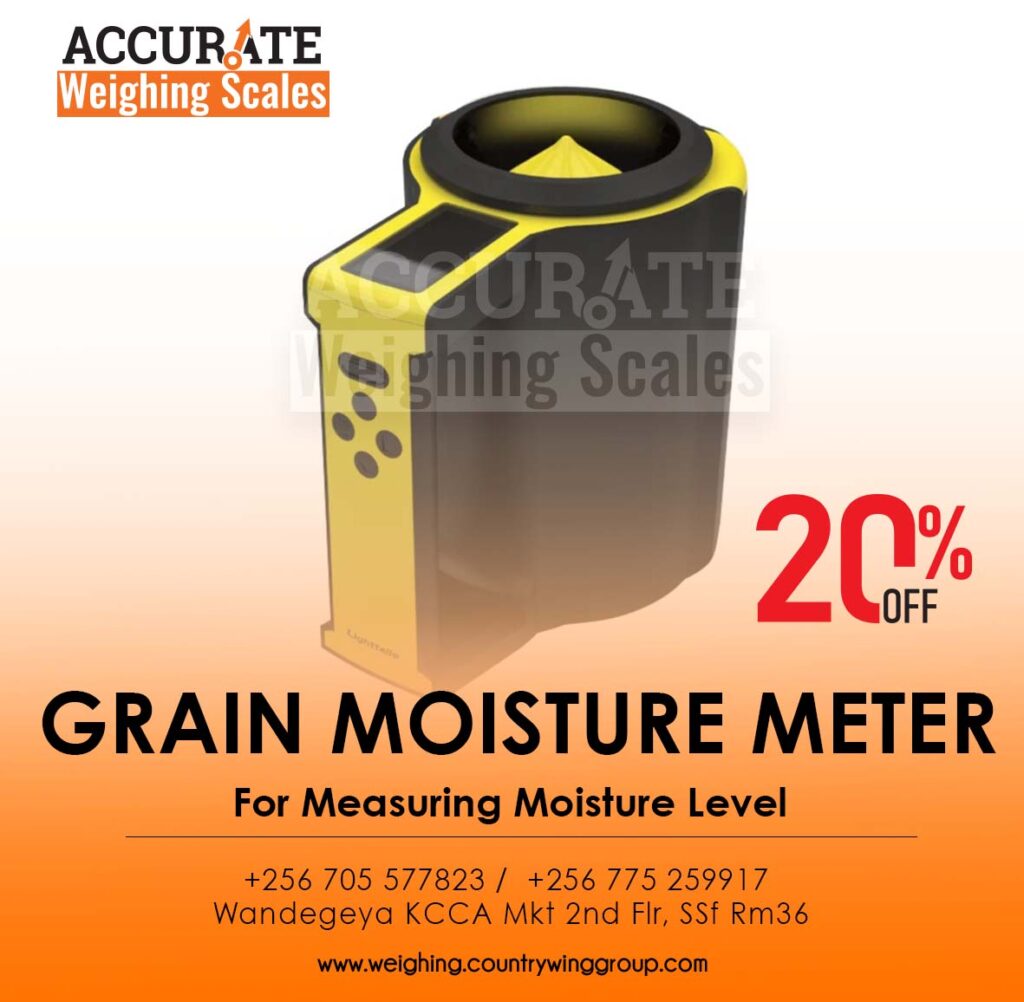Digital moisture meters How to Choose the Right Grain Moisture Meter for Your Needs
If you work with grains in any capacity, whether as a farmer, a commodity trader, aggregator, or feed producer, then a grain moisture meter is a piece of equipment you absolutely need. In this article, you’ll learn about grain moisture meters, why you need one, how they work and how to choose the best moisture meter for your operations.
Why you need a grain moisture meter
Grain moisture meters are tools that help you measure the moisture content in different grains, before, during, and after harvest. Measuring the moisture content of your grains helps you know whether your grains are dry enough. Knowing the moisture content of your grains is important because the high moisture content in grains leads to mold growth and aflatoxin contamination which destroy grains.
For farmers, the high moisture content in grains could cause you to lose a big chunk of your harvest – which in itself is a scary thought. Also for commodity traders, many buyers require you to meet certain moisture content standards before they will accept your grain. In addition, many buyers want the moisture content of corn to remain below 13% otherwise they will not buy. Finally, for poultry farmers and feed producers, the high moisture content in grains can affect the quality of your feed and ultimately the productivity of your birds.
While there are ingenious ways to estimate the moisture content in grains, the best way is to use a grain moisture meter. As it offers precise and accurate measurements, letting you know whether your grains are dry enough or if they should be dried some more. Ingenious ways like biting the kernel or tossing a handful of grains to listen for the sound they make do not offer such benefits.
Types of grain moisture meters and how they work
There are different kinds of moisture meters, each with its own principle of operation and underlying technologies.
Probe-type moisture meters like the GrainMate Grain Moisture Meter use a sensor to measure the temperature and humidity of the grains. It also comes along with special mathematical models to tell the equilibrium moisture content (EMC) in a grain sample.
Sesi Technologies GrainMate Grain Moisture Meter
Cup-type meters like the John Deere Moisture Check Plus SW08120 use a high frequency capacitive circuit to measure the moisture content in a small gain sample.
John Deere Moisture Check Plus SW0812
Other types of moisture meters like the AgraTronix 08201, GMT-Grind Portable Grain Moisture Meter use a grinder to grind a small sample of the grain in order to measure the in the sample.
AgraTronix 08201, GMT-Grind Portable Grain Moisture Meter
Choosing the right moisture meter for your operations
There are a lot of factors to consider when choosing a grain moisture meter. These include accuracy, ease of use, price, mode of operation, calibration, moisture measurement range, number of species supported, and more. If you frequently test the moisture content on the field before harvest, then a grinder-type meter or a cup-type meter will be most suitable for you. As it can tell you if your grains are dry enough for harvest.
Many of these moisture meters support several species, have a wide measurement range, and can be calibrated.
In Africa where grains are usually packed and stored in 50kg to 130kg sacks, a probe-type grain moisture meter like the GrainMate GM-102 is a very suitable choice for African farmers and aggregators. This is because it can be used to easily probe bags and take moisture readings within a short time both during and after harvest.
The GrainMate Moisture Meter comes with a mobile app that lets users record, track the moisture content of grains across different suppliers and get useful recommendations. Aside from being effective and accurate, GrainMate Moisture Meter is considerably less expensive than other meters on the market. And affordability is very important since most farmers in Africa are unable to afford expensive technology tools. The GrainMate Moisture Meter is also very portable, easy to use, and can be calibrated. It also supports popular grains grown in Africa including corn, rice, wheat, sorghum, soybeans, millet, and groundnuts.
Closing thoughts
It’s a proven fact that poor moisture content in grains can have adverse effects on the quality of grains. This could result in big losses for both farmers and traders. Which is why you need to have a good quality moisture meter to measure the moisture content in your grains before, during and after harvest.
The right grain moisture meter is a good investment that will definitely help you reduce losses and save money for several years. For farmers in Africa, the GrainMate Moisture Meter is an excellent moisture meter developed and manufactured in Africa. Learn more about GrainMate Moisture Meter and see how our meter can benefit your operations today.
Share this post
Stop Losing Money!
Are you a grain farmer, grain trader or agribusiness? Discover how our technologies can help you reduce post-harvest losses, maximize your productivity and increase your income.
Thank you for allowing Accurate Weighing Scales (U) Ltd the privilege to serve you in advance.
For inquiries on deliveries contact us
Office +256 (0) 705 577 823, +256 (0) 775 259 917
Address: Wandegeya KCCA Market South Wing, 2nd Floor Room SSF 036
Email: weighingscales@countrywinggroup.com
